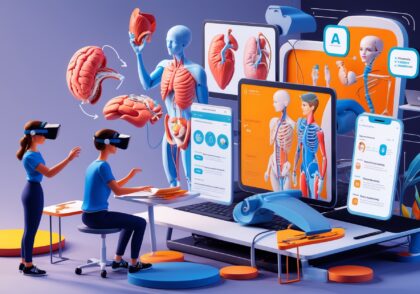Dr. Gunther von Hagens: Life and Scientific Background
Introduction
Dr. Gunther von Hagens is one of the world’s most famous anatomists and physicians, known as the inventor of plastination. He revolutionized the science of anatomy by using this technique, allowing scientists, physicians, students, and the general public to view the anatomy of the human body in a realistic, accurate, and permanent way. In this article, we will examine the life, achievements, and influence of Dr. Gunther von Hagens on medical science and anatomical display.
Dr. Gunther von Hagens: Life and Scientific Background
Early life and education
Dr. Gunther von Hagens was born on January 10, 1945 in Germany. He had a great interest in medical science and anatomy since childhood. He began his medical studies at German universities and then engaged in scientific research in the field of human and animal anatomy. After gaining expertise in this field, he was able to be recognized as one of the most prominent anatomists in the world.
Dr. von Hagens’s education:
-
- Graduated in medicine from German universities
- Specialization in human anatomy
- Studying various fields of medicine and anatomy in different countries
The first steps in the invention of plastination
In the 1970s, Dr. von Hagens began researching methods for preserving anatomical specimens. He initially tried to preserve body tissues using various chemical processes to create accurate and stable models of human and animal bodies. After several years of research and experimentation, he finally succeeded in inventing the technique of plastination.
Challenges in the early stages:
-
- Problems related to tissue preservation
- The need to develop new methods to preserve anatomy
- Use of special chemicals and polymers
Plastination: A Revolutionary Technique in Anatomy
Plastination process
Plastination is a process in which human or animal body tissues are permanently preserved by replacing water and fats with polymeric materials. This technique is particularly useful in teaching anatomy and displaying details of the human body. Plastination causes the tissues to retain their natural structure, as well as to be free from biological changes and decay.
The main steps of plastination:
-
- Body preparation: The first step in the plastination process is body or organ preparation. This step involves separating the tissues from the original body and placing it in specific conditions.
- Removal of water and fat: Water and fat in tissues are removed using chemicals.
- Polymer replacement: After water and fat are removed, polymers such as silicone, resin, and epoxy are introduced into the tissues instead.
- Hardening and drying: In the final stage, the samples are placed at the appropriate temperature to harden the polymers and obtain the final sample.
Benefits of Plastination in Anatomy Display
As a unique technique for displaying anatomy, plastination has many advantages, including:
- Permanent preservation of specimens: Plastination is designed to permanently preserve anatomical specimens.
- More accurate representation of anatomy: This process helps to more accurately display the tissues and components of the human body.
- Possibility of use in education and research: By using plastinated specimens, medical students and anatomists can become familiar with the structures of the body and, at the same time, easily analyze them.
- Resistance to decay: Unlike other anatomical specimens that decay after a short period of time, plastinated specimens are easily exposed to various environmental conditions.
Gunther von Hagens and his influence on the world of science and art
The impact of plastination on anatomical art
One of Dr. von Hagens’ greatest achievements was the introduction of plastination to the art world. This technique allowed anatomical specimens to be recognized not only as educational tools but also as works of art. By organizing various exhibitions and displaying plastinated specimens in museums, especially in the Göttingen Museum, Gunther von Hagens was able to draw the world’s attention to this scientific art.
Public performances:
-
- World exhibitions held using plastinated specimens.
- Introducing the human body as a work of art with meticulous detail.
- Widespread influences on the display of anatomy in museums and galleries.
The Body Worlds project and global success
One of Dr. von Hagens’s biggest projects was the Body Worlds project, which featured plastinated human body models. The project was held in over 120 cities around the world and attracted the attention of millions of people. In these exhibitions, people could view the human body in various poses and examine the anatomical details up close.
Features of the Body Worlds project:
-
- Display of various parts of the human body in normal and diseased states.
- Using advanced technologies to teach anatomy.
- Create an interactive experience for visitors.
Challenges and controversies in Dr. von Hagens’ professional life
Controversies and ethical criticism
Plastination, especially when performed on human bodies, has always been associated with controversy and ethical criticism. Some people, especially religious and human rights groups, have objected to the process, considering it a violation of human rights. In the face of this criticism, Dr. von Hagens has always emphasized the scientific and educational importance of these projects.
Moral criticisms:
-
- Using human bodies to demonstrate anatomy.
- Ethical concerns about body collection methods.
- Critiques about respect for humanity in the plastination process.
Conclusion
Dr. Gunther von Hagens, with his invention of plastination and major projects such as Body Worlds, has revolutionized the world of medical science and the art of anatomy. The plastination technique is not only used as a new method in teaching anatomy, but has also significantly influenced the scientific and artistic body. Despite the controversies and ethical criticisms, Dr. von Hagens’ scientific and educational achievements have undoubtedly had a tremendous impact on the world of medicine, education, and even art.







Leave a Reply
You must be logged in to post a comment.